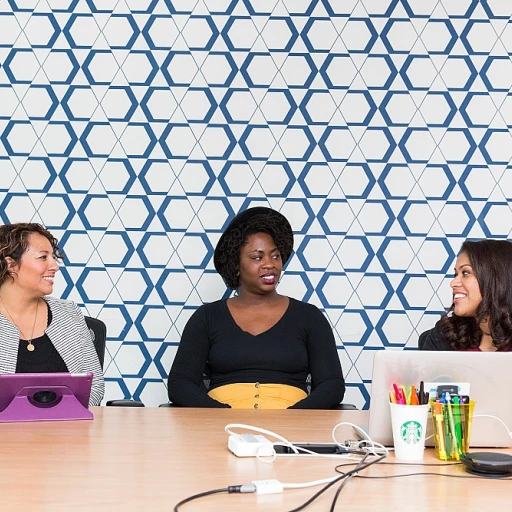
Understanding User-Centered Design
Grasping the Essence of User-Centered Design
User-centered design (UCD) is a methodology that places the user at the core of the design process. It emphasizes understanding users' needs, preferences, and limitations to create products that offer a seamless user experience. This approach is not just about aesthetics; it's about crafting solutions that are intuitive and functional.
In the realm of UCD, the design process is iterative, involving continuous testing and refinement. Designers engage with users throughout the development cycle, ensuring that the final product aligns with user requirements and expectations. This human-centered approach is crucial in today's competitive market, where user experience can make or break a product.
The Role of Cognitive Science and Human-Computer Interaction
Understanding users involves delving into cognitive science and human-computer interaction. These fields provide insights into how users interact with systems, enabling designers to anticipate potential challenges and design solutions that are both efficient and user-friendly. By applying principles from these disciplines, designers can create systems that are not only technically sound but also resonate with users on a cognitive level.
For those interested in diving deeper into the principles of user-centered design, exploring resources on mastering information architecture can provide valuable insights into structuring content and systems in a way that enhances user experience.
Integrating UCD into the Design Process
Integrating UCD into the design process requires a shift in mindset. It involves prioritizing user feedback and incorporating it into every stage of development. This can be achieved through various techniques such as design sprints, user testing, and iterative prototyping. By adopting these practices, design teams can ensure that their products meet the needs of their users, leading to higher satisfaction and engagement.
As we explore the key principles and challenges of UCD in subsequent sections, it's important to remember that the ultimate goal is to create products that not only meet functional requirements but also provide a delightful user experience.
Key Principles of User-Centered Design
Foundational Principles for Creating Effective User-Centered Designs
When it comes to crafting successful user interfaces and experiences, certain core principles stand as the pillars of user-centered design. These principles are not merely checkboxes but are integral to ensuring that the needs and pain points of your users are genuinely prioritized.- Empathy: Start by understanding your users, not just their actions but their emotions, motivations, and contexts. Empathy is key in aligning design decisions with user preferences, ultimately dictating how intuitive and satisfactory the interaction will be.
- Iteration: Effective user-centered design is iterative. Through continuous testing, feedback, and refinement, designers can enhance usability. This iterative loop allows for rapidly addressing and adapting to user feedback and emerging needs.
- Inclusivity: Designs should cater to a diverse user base. Inclusive design principles ensure that people of different abilities and backgrounds can equally access and benefit from the product. User-friendly layouts, accessible color contrasts, and clear communication enhance universal usability.
- Simplicity: Complex user interfaces often lead to frustration. Streamlining interfaces to emphasize tasks that users value most contributes to an overall better user experience.
- Consistency: Ensure that your design language across the product is consistent. Consistency helps users develop a better understanding and familiarity, facilitating seamless interactions.
Challenges in Implementing User-Centered Design
Overcoming Hurdles in User-Centric Design Implementation
Implementing a design strategy that truly centers around the user can be fraught with challenges. Companies often face institutional and cultural barriers as they strive to embed user experience design as a core operational principle. Resistance can stem from a lack of understanding or appreciation for the value that user-centered design brings.
One of the fundamental struggles is the difficulty in aligning stakeholder priorities with end-user needs. While stakeholders might focus on achieving business objectives, user experience designers are tasked with advocating for users who might not always be given a voice. Striking this balance is critical yet complex, requiring careful negotiation and communication.
Moreover, testing can become a bottleneck. While tools exist to gather user feedback before product launches, incorporating user input into a fast-moving development cycle is often challenging. Teams may lack the resources or processes to effectively loop feedback into iterative design stages.
Another frequent issue is scalability. As projects grow in size and scope, maintaining a user-focused approach can become increasingly difficult. This is where crafting an adaptable, yet streamlined user-centered design process becomes vital to success.
Finally, keeping up with the rapid evolution in technologies and trends further complicates implementation. Navigating this landscape necessitates a continuous effort to identify UX opportunities that push the boundaries of innovative design.
Tools and Techniques for User-Centered Design
Efficacious Practices in User-Centered Design Implementation
Successfully implementing a user-centered design approach requires leveraging the appropriate tools and techniques to ensure users' needs are met effectively through the design process. Here are some essential practices that can guide you:
- Empathy Mapping: This technique helps designers understand users’ feelings, thoughts, and needs. It's a visual tool that allows teams to step into the users' shoes, facilitating a deeper comprehension of user contexts and motivations.
- Wireframing and Prototyping: Integral activities in the design process, wireframing and prototyping allow designers to create functional layouts and test usability aspects early on. They enable rapid iterations, making it easier to incorporate user feedback efficiently.
- User Testing: Conducting usability tests at various stages is crucial for refining design decisions. Regular feedback loops ensure the design remains aligned with user expectations, which is the crux of any user-centered approach.
- Feedback Analysis: It’s vital to not only gather feedback but to analyze it in a way that informs design improvements. Using qualitative and quantitative methods can help in gaining insights that drive the design forward.
- Personas Development: Creating detailed personas aids in representing key segments of your audience. These fictional characters guide design decisions by keeping real user needs at the forefront.
The use of these tools and techniques places the user at the heart of the design process, ensuring their experience is both intuitive and fulfilling. Mastering these practices can navigate the complexities that align with user needs and emerging design challenges.
Case Studies: Successful User-Centered Design
Real-World Examples of Effective User-Centered Design
Exploring successful cases of user-centered design offers valuable insights into the practical application of its principles. These examples show how a deep understanding of user needs leads to innovative solutions and improved user experiences.
- Healthcare Applications: In the healthcare sector, some applications have effectively utilized user-centered design by prioritizing the end user's journey. By deeply engaging with both patients and healthcare professionals, these apps simplify complex processes like appointment scheduling and medication tracking. This approach not only enhances usability but also boosts user adoption rates.
- E-commerce Platforms: Major e-commerce companies are shining examples of how understanding customer behavior can shape design. By conducting extensive user research, they have fine-tuned their interfaces to improve navigation, checkout processes, and personalized recommendations, leading to increased conversion rates and customer satisfaction.
- Educational Tools: Platforms providing online education have successfully implemented user-centered design by focusing on accessibility and engagement. By incorporating user feedback, they have developed intuitive interfaces that address diverse learning styles, making education more inclusive and effective for all users.
- Public Services Websites: Some governmental websites have embraced user-centered design by prioritizing citizen feedback. Simplifying access to information and services through logical categorization and straightforward navigation demonstrates a commitment to enhancing the user's experience by reducing complexity.
These cases highlight not only the importance of implementing user-centered design but also the tangible benefits that arise from addressing user needs at every stage of the design process. As design continues to evolve, these real-world applications serve as a benchmark for future projects striving towards a user-centric approach.
The Future of User-Centered Design
The Evolution of User Needs
In the rapidly changing landscape of design, recognizing the evolving needs of users remains paramount. The success of user-centered design (UCD) heavily relies on constant user research, ensuring that design solutions align with real-world demands. As technology progresses, designers must continually adapt methodologies, staying informed about new tools and techniques to meet these shifting expectations.
Integration of Advanced Technology
Emerging technologies such as artificial intelligence and virtual reality are increasingly becoming part of UCD strategies. These advanced tools not only enhance user experience but also provide designers with deeper insights into user behavior through data-driven analysis. As a result, designers can craft more intuitive and responsive solutions, meeting users' evolving needs effectively.
Emphasizing Accessibility and Inclusivity
As UCD continues to grow, the concepts of accessibility and inclusivity are gaining more emphasis. Designing for diverse users and ensuring equitable access to information and services is not just beneficial – it's essential. As more organizations realize the importance of these principles, we can expect broader implementation of inclusive design practices, ultimately leading to more ethical and human-centered innovations.
Designing for Sustainability
The future of UCD also encompasses sustainable design practices. With increasing awareness around environmental concerns, designers are tasked with finding innovative solutions that are sustainable yet user-friendly. This includes considering the entire lifecycle of a product, from materials and production methods to disposal and recycling.
Continuous Learning and Adaptation
Finally, the future of UCD involves a commitment to lifelong learning and adaptation. As new tools and methodologies emerge, professionals in the field should be prepared to embrace these changes, integrating them into their design processes. This continuous evolution ensures that user-centered design remains relevant and effective, providing meaningful experiences to users worldwide.














